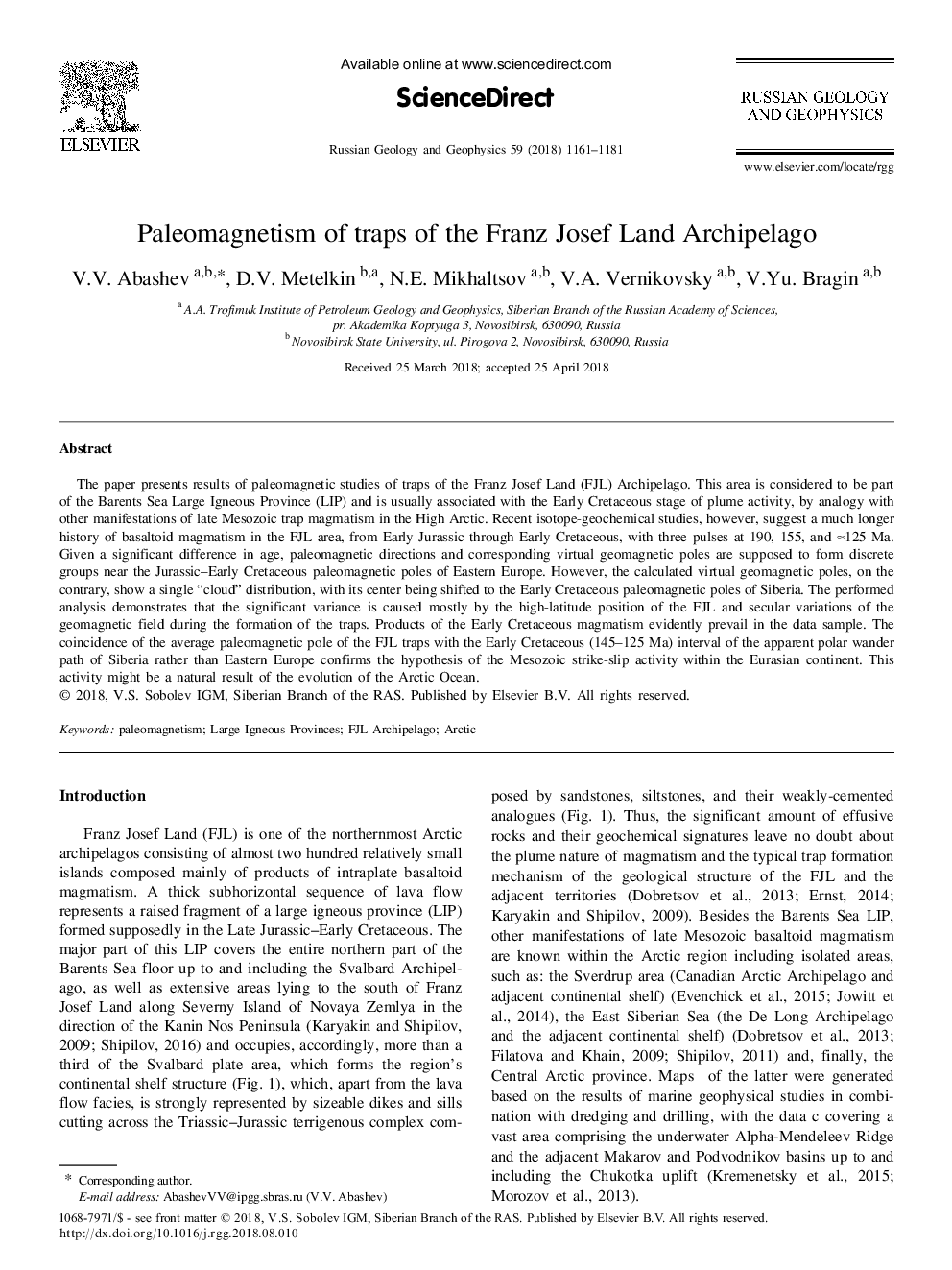| Article ID | Journal | Published Year | Pages | File Type |
|---|---|---|---|---|
| 10224409 | Russian Geology and Geophysics | 2018 | 21 Pages |
Abstract
The paper presents results of paleomagnetic studies of traps of the Franz Josef Land (FJL) Archipelago. This area is considered to be part of the Barents Sea Large Igneous Province (LIP) and is usually associated with the Early Cretaceous stage of plume activity, by analogy with other manifestations of late Mesozoic trap magmatism in the High Arctic. Recent isotope-geochemical studies, however, suggest a much longer history of basaltoid magmatism in the FJL area, from Early Jurassic through Early Cretaceous, with three pulses at 190, 155, and â 125 Ma. Given a significant difference in age, paleomagnetic directions and corresponding virtual geomagnetic poles are supposed to form discrete groups near the Jurassic-Early Cretaceous paleomagnetic poles of Eastern Europe. However, the calculated virtual geomagnetic poles, on the contrary, show a single “cloud” distribution, with its center being shifted to the Early Cretaceous paleomagnetic poles of Siberia. The performed analysis demonstrates that the significant variance is caused mostly by the high-latitude position of the FJL and secular variations of the geomagnetic field during the formation of the traps. Products of the Early Cretaceous magmatism evidently prevail in the data sample. The coincidence of the average paleomagnetic pole of the FJL traps with the Early Cretaceous (145-125 Ma) interval of the apparent polar wander path of Siberia rather than Eastern Europe confirms the hypothesis of the Mesozoic strike-slip activity within the Eurasian continent. This activity might be a natural result of the evolution of the Arctic Ocean.
Related Topics
Physical Sciences and Engineering
Earth and Planetary Sciences
Geology
Authors
V.V. Abashev, D.V. Metelkin, N.E. Mikhaltsov, V.A. Vernikovsky, V.Yu. Bragin,
